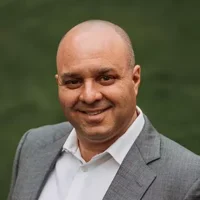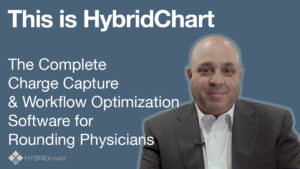It is surprising to me that many doctors loath the thought of electronic solutions to their workflow. Doctors tend to be scientifically oriented and appreciate creative solutions to problems. Medical professionals also have limited time, so I would expect them to gravitate towards solutions which improve efficiency. So then, why are doctors so resistant to change – and to technology solutions specifically?
The answer is simpler than you think.
Let’s look at a few examples of how physicians have embraced technology, and then it may become more obvious why they sometimes act like a cranky toddler in a grocery store. I came from an era when X-rays were actual films with lightboxes, echocardiograms were on VHS tapes, and labs arrived printed on a sheet of paper, which was neatly filed in the chart. Today, we can pull up imaging studies with a few clicks, and can easily draw pretty graphs of a patient’s sodium level for the past six months. These solutions have become common practice and do not disrupt the provider and their precious workflow. I should also mention modern-day examples of how certain apps on a smart phone have made life much easier. I can look up medications, renal formulas which I never understood, even research studies – all in the palm of my hand.
Now let’s turn our attention to electronic health records. You probably heard that groan in the background. That’s because most providers feel that all EHRs are bad. Hospital, office, ER – bad, bad, bad. The most common complaint I hear is “They don’t understand what I do all day,” or “I am being clicked to death.” There is some truth to this. Most EHRs are not intuitive and forcibly try to replicate a physician workflow, but in a very poor fashion. Providers will resist disruption that is being imposed upon them. These clunky solutions usually come with a lot of extra goodies, like filling out forms, overriding drug interactions, and justifying restraint orders. Now don’t get me wrong, all of these items are important, but it sometimes feels like you are being micromanaged by a boss who isn’t in the trenches with the rest of the soldiers.
In the end, medical providers are true professionals. In an era where our autonomy has been eroded, disruptions to our workflow create a very primal reaction. Doctors are protective because these routines are delicately balanced, and for the most part, they work. When e-solutions come along and solve bits and pieces of the overall process, it unravels the whole thing.
If you want medical professionals to adopt efficient, lean, cost-saving technologies, the trick is to find ones that truly understand their world, and do not disrupt their carefully crafted workflows.
Unhappy with your current mobile charge capture technology and looking to change to a comprehensive rounding solution? Learn how HybridChart’s implementation team makes changing software easy by clicking here.







